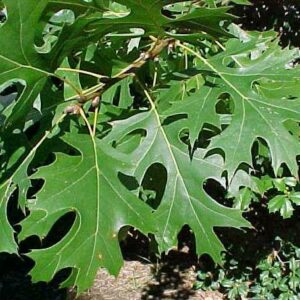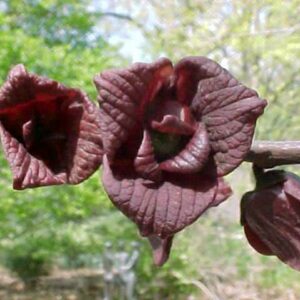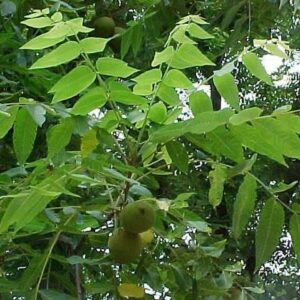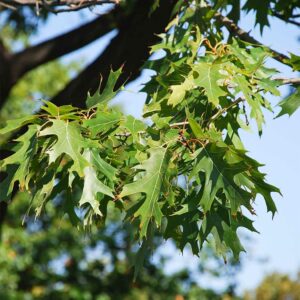Northern Red Oak (Quercus rubra)
$30.00
2 in stock
Share
Description
Culture
Easily grown in average, dry to medium moisture, acidic soil in full sun. Prefers fertile, sandy, finely-textured soils with good drainage.
Noteworthy Characteristics
A medium sized, deciduous tree with a rounded to broad-spreading, often irregular crown. Typically grows at a moderate-to-fast rate to a height of 50-75′ (often larger in the wild). Dark, lustrous green leaves (grayish-white beneath) with 7-11, toothed lobes which are sharply pointed at the tips. Leaves turn brownish-red in autumn. Insignificant flowers in separate male and female catkins appear in spring. Fruits are acorns (with flat, saucer-shaped cups) which mature in early fall. An abundant crop of acorns may not occur before this tree reaches 40 years old. A Missouri native tree which typically occurs on northern- and eastern-facing wooded slopes throughout the State. Also commonly called northern red oak.
Problems
Generally a durable and long-lived tree. Susceptible to oak wilt which is a systemic fungal disease that has no cure. Chlorosis (yellowing of the leaves while the veins remain green) often occurs when soils are not sufficiently acidic.
Garden Uses
Specimen, street tree, lawn tree.
Additional information
| size | 15-gallon, 3-gallon |
|---|
Related products
-

River birch (Betula nigra)
$30.00 – $90.00 Select options This product has multiple variants. The options may be chosen on the product page -

Shumard oak (Quercus shumardii)
$30.00 Add to cart -

Pawpaw (Asimina triloba)
$30.00 Out of Stock -

Black Walnut (Juglans nigra)
$30.00 Add to cart


